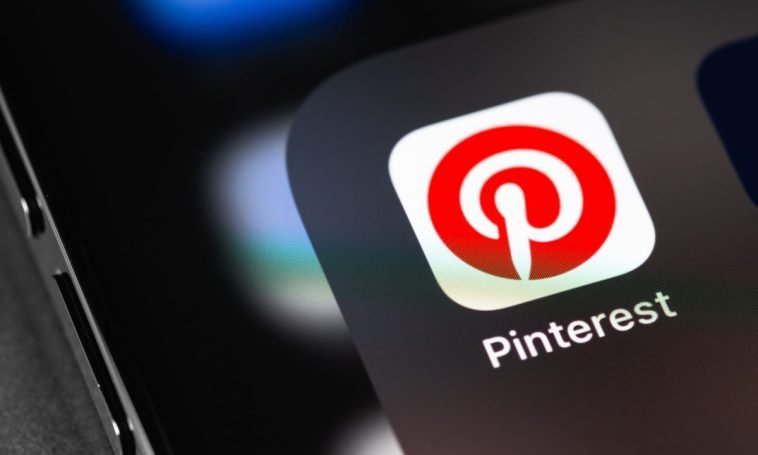Introduction.
Affiliate marketing is a pretty popular way to make passive income, but many people think you need a blog to get started.
That’s not true! You can use Pinterest for affiliate marketing without having a blog, and it’s surprisingly effective.
Pinterest is one of the largest visual search engines, with over 445 million monthly users, many of whom go there specifically looking for products, ideas, and inspiration.
That makes it an ideal platform for affiliate marketing, especially if you’re someone who enjoys sharing content but isn’t into managing a blog.
If you’ve ever used Pinterest, you know that it’s not just a place for wedding inspiration and DIY crafts—it’s also a platform where people search for everything from fashion tips and recipes to tech gadgets and financial advice.
Since Pinterest users are often in a shopping mindset, they’re more likely to click on affiliate links that lead to products or services they’re interested in.
So, if you’re strategic, you can share affiliate links directly on Pinterest and earn commissions without ever needing to write a single blog post.
In this guide, I’ll walk you through how to set up affiliate marketing on Pinterest step-by-step.
Whether you’re new to affiliate marketing or just looking for ways to increase your reach without starting a blog, you’ll find everything you need here.
Why Pinterest is Perfect for Affiliate Marketing (Without a Blog)
Pinterest is unique because it functions more like a search engine than a social media platform. While Instagram and Facebook focus on connecting people, Pinterest focuses on helping people find information and inspiration.
According to recent studies, around 89% of Pinterest users use the platform for purchase inspiration, and 50% have purchased after seeing a Promoted Pin (Source: Sprout Social). The way Pinterest works—focusing on discovery and sharing—makes it a natural fit for affiliate links.
How Do I Use Pinterest For Affiliate Marketing Without a Blog?
1. Choose a Niche.
Like any form of affiliate marketing, picking a niche helps you target the right audience. The more focused your niche, the easier it will be to create Pins that resonate with your followers. Some popular niches on Pinterest include:
- Fashion and Beauty
- Home Decor and DIY
- Health and Fitness
- Personal Finance and Investments
- Tech and Gadgets
Choose a niche you’re passionate about or have knowledge of, as this will make creating and sharing content much easier and more enjoyable.
2. Join Affiliate Programs.
There are hundreds of affiliate programs out there, so you’ll want to join ones that align with your niche.
If you’re into fashion, consider programs like RewardStyle or ShopStyle. If tech is your thing, Amazon’s affiliate program can be a great start because it offers a wide range of products.
You might also want to check out platforms like ClickBank or ShareASale, which host various affiliate programs across different industries.
Once you’re signed up, these programs will give you unique affiliate links to share on Pinterest. Just remember, some platforms have policies around directly linking affiliate URLs, so always check Pinterest’s guidelines as well as those of the affiliate program.
3. Set Up a Business Pinterest Account.
Creating a Pinterest Business account will give you access to analytics and other helpful tools to track your performance.
This account type is free and is specifically designed for marketers. Once your account is set up, add a short bio that reflects your niche and links to any social media profiles or affiliate pages you might have.
4. Create Attractive, Eye-Catching Pins.
Pinterest is all about visuals, so creating Pins that stand out is key. Use high-quality images and make sure they’re in Pinterest’s preferred aspect ratio (2:3). Canva is a great, user-friendly design tool for creating professional-looking Pins, even if you have no design experience.
Make your Pin titles and descriptions compelling. Use keywords related to your niche so that your Pins show up in relevant searches.
For example, if you’re promoting fitness products, words like “fitness tips,” “workout gear,” or “healthy lifestyle” can help attract your target audience.
5. Add Affiliate Links to Your Pins.
When you create a new Pin, you’ll have the option to add a URL. This is where you’ll place your affiliate link.
If the platform you’re using doesn’t allow direct affiliate links, you could use a bridge page (like a Linktree or an Instagram bio link) to host multiple affiliate links.
Also, be transparent about affiliate links in your Pins or descriptions. A simple note like “affiliate link” or “I may earn a commission” can keep things honest and compliant with guidelines.
6. Use SEO-Friendly Descriptions.
Pinterest is a search engine, so optimizing your Pin descriptions for SEO can significantly boost your visibility.
Think about keywords or phrases that people in your niche are searching for. Including these in your Pin title and description increases the chances of your content appearing in search results.
For instance, if you’re sharing a Pin about workout gear, include keywords like “best workout leggings,” “gym essentials,” or “fitness must-haves.”
7. Join Group Boards and Tailwind Tribes.
Group boards and Tailwind Tribes (if you’re using the Tailwind app) can expand your reach by connecting you with like-minded users and allowing you to share Pins with larger audiences. Look for group boards in your niche and request to join.
While these don’t guarantee more clicks, they can expose your content to a broader audience, which could lead to more engagement.
8. Track Your Performance and Optimize.
Regularly check your Pinterest analytics to see which Pins are performing well. Are certain products or types of images getting more clicks?
Use that information to adjust your strategy. Over time, you’ll learn which content resonates most with your audience and refine your approach.
Common FAQs
1. Can I do affiliate marketing on Pinterest without a blog?
Yes, absolutely. Many people successfully use Pinterest for affiliate marketing without needing a blog. Just make sure you follow both Pinterest’s and the affiliate program’s guidelines on using direct links.
2. How do I disclose affiliate links on Pinterest?
Simply add a note like “affiliate link” or “commission earned” in your Pin descriptions. Being upfront about affiliate links builds trust and keeps you compliant with guidelines.
3. Do I need to invest in Pinterest ads?
It’s optional. You can start without ads and still reach a good number of people. However, once you start earning, you might choose to invest in Promoted Pins for greater reach.
4. Which types of Pins work best for affiliate marketing?
High-quality, visually appealing Pins with relevant keywords generally work best. Infographics, product roundups, and before-and-after images often perform well.
5. Can I use Pinterest for affiliate marketing in any niche?
Pinterest is ideal for visually engaging niches like fashion, fitness, and home decor, but you can certainly try other niches too. The key is to know what appeals visually to your audience.
Conclusion
Getting started with affiliate marketing on Pinterest doesn’t require a blog, and it can be a rewarding way to earn passive income by sharing products you genuinely love.
All it takes is a Pinterest Business account, some knowledge of your niche, and a bit of creativity with visuals and keywords. While it may take a bit of time to gain traction, consistency and quality content will help you see results.
Are you ready to try Pinterest for affiliate marketing, or do you think a blog might be in your future too?





GIPHY App Key not set. Please check settings